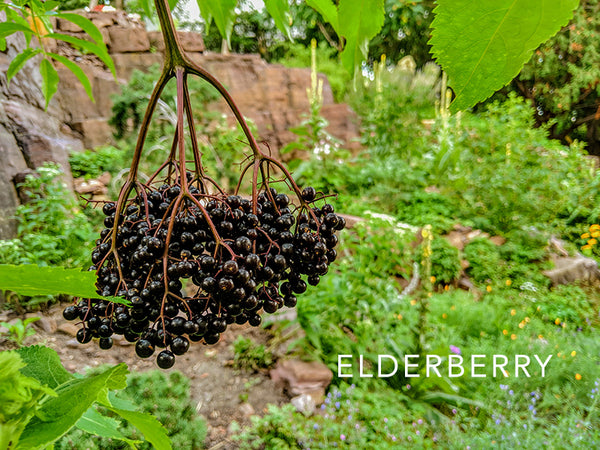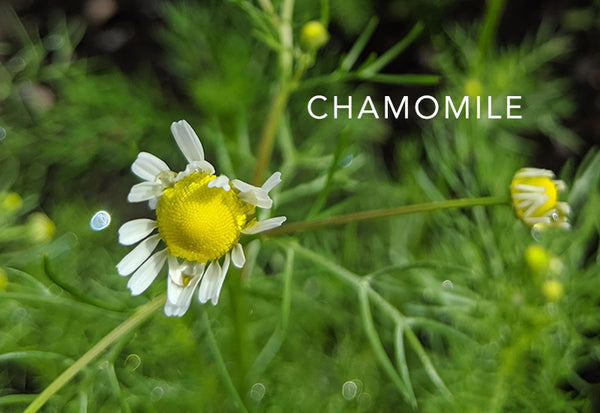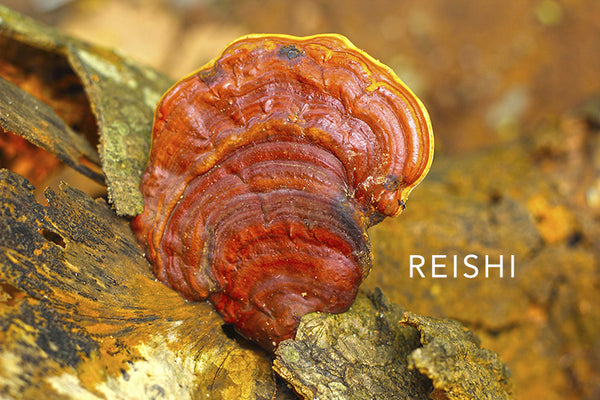Environmental Resilience Through Herbal Medicine
You can learn a lot from the study of medicinal plants and mushrooms: how they carry their embodied selves, how they communicate, how they compete and (more often) support each other. It is also instructive to look at how plants, in a general sense, affect human beings: beyond affecting one or more structures of our bodies or functions of our physiology, tonic herbal medicine has a unique way of engaging the whole of human physiology. This supportive way points us to broader insights about living systems in general: we begin to see fragile, resilient, and regenerative systems everywhere. You can tell them apart by how they handle the effects of occasional stress from the world: while fragile systems crumble and resilient systems weather the storm, truly regenerative systems thrive and grow. Herbal medicine can help us--individually, and as a culture and species--achieve these regenerative qualities.
Don’t get me wrong: there is a threshold level of stress beyond which all life-forms suffer. But the key point when experiencing occasional stress is that we can raise that threshold, and at the same time alter what stress is doing to us. We can shift from being worn down to being invigorated and energized. While we’ve looked at this in a general sense (adaptogens, for instance, help us to use occasional stress as a source of energy, and aromatic nervines help modify how we perceive it), let’s take a closer look at some of the herbs that can help us be more regenerative as our world experiences the fits and starts that climate and ecosystem shifts have brought to our daily lives.*
Immunity
The way our immune systems interface with the world is essentially via an information-processing system: instead of using words, immune cells speak a language of protein and sugar chains, reflecting the fact that these are found everywhere, on the outside of nearly every cell and microbe. As mentioned above, occasional stress can impact our immunity. But while the immune system can be fragile, it often can navigate the world well.
One concern that immunologists have been voicing is that excessive hygiene might be impacting immunity. Termed the “hygiene hypothesis”, this idea posits that our immune system thrives on exposure (again, within reasonable limits). Reduce exposure, reduce the diversity of signals, thin out the information stream, and immunity loses some of its resilience. This is where herbs come in: some roots and mushrooms are rich in chemistry that, to our immune systems, looks a lot like the sugar and protein chains it’s used to finding in the wild. These immuno-supportive herbs don’t push immunity one way or the other: they increase the diversity of relevant signals, and in so doing, support a thriving immune system that can engage effectively with the world.*
Some of our favorites are astragalus (Astragalus membranaceus), codonopsis (Codonopsis pilosula), and reishi mushroom (Ganoderma lucidum). There are many others, but all three listed above contain polysaccharides (sugar chains) with activity on human immune function. Astragalus and codonopsis, additionally, contain saponins (soap-like molecules with short sugar chains on one end) which spontaneously arrange themselves into nano-sized spheres known as micelles when added to a watery environment (think tea, or your stomach). These may contribute to the gently immuno-supportive effects of these herbs.*
Our favorite way to take these immune tonics: since it can take time to extract these, we suggest either a liquid or a dry extract, or using them dry and chopped as an ingredient in bone broth or vegetable stock. Astragalus is used at doses of 9 to 15 grams daily (about 1/3 ounce at the low end of the dose range, close to 1 TBS of powder); codonopsis doses are between 6 and 9 grams a day; reishi’s dose is a bit lower when taken as a powder, at 2-3 grams a day (about 1/10 ounce, close to 1 tsp of powder).
Respiratory health
Our respiratory tract has more than one job: while we think of our lungs as oxygen-delivery and CO2-removal organs (and rightly so), the entire respiratory tract is responsible for keeping dust and other particles out of the deep parts of the lungs. To this end, bronchial passages are lined with a natural self-cleaning system made of cilia (tiny hairs), mucus (which rides on the cilia), and smooth muscle (which keeps the whole system pulsing upwards and out through the throat). In a world where threats from wildfire, scorching heat, and even human-made air pollutants (such as the fine particulate we see hanging in a haze around many cities globally) are increasingly present, it makes sense to think of herbs that support our lungs’ natural abilities. This has always been a concern: humans have been living in close quarters, around smoky fires, for a very long time. Herbs have a supportive role to play here, too.
Traditional herbal medicine proposes an interesting idea: that many of our herbal lung tonics may be able to support the normal activity of smooth muscle, cilia and mucus in the lungs by engaging nerve endings found in the GI tract. This idea, akin to the concept of a reflex, posits that the experience of herbal constituents in the GI tract may end up supporting lung function (even without those constituents coming into contact with lung tissue) via nerve channels shared by the lungs and gut. The result may be support for a clear chest. If you think about some of the classic lung support herbs, you’ll see a lot of them have just a slight edge to them, a spiciness and acridity thought responsible for this “reflex” effect.*

We have a few favorites we turn to over and over. Elecampane (Inula helenium) shines because of its warming, aromatic spice. But it also has a bitter and pungent side, and a well-deserved reputation as a lung and bronchial tonic. Because of its strong flavor, we often suggest elecampane root be taken as a liquid extract: 1-2 mL (between ¼ and ½ tsp., roughly) can be taken up to six times a day.*
Lobelia (Lobelia inflata) has a long and complex history. In small doses, it supports the normal activity of smooth muscle in the lung’s self-cleaning system. But it also has a “moving” quality related to its acridity, helping it fit neatly into the traditional “reflex” model described above. The doses of lobelia, usually in the form of a liquid extract, are quite low: 5-10 drops (0.15-0.3 mL), up to 30 drops or so (about 1 mL), are diluted in water and taken two to three times daily for bronchial support.*

If you look at a mullein (Verbascum thapsus) plant, you’ll find it is covered with fine, bristly hairs. This is especially true of the leaves, which are a traditional lung tonic. When brewed as a tea, mullein leaves help to support the normal activity of the lungs and keep the chest clear. We take dried mullein leaves, about 1 TBS or about 1.5 grams (they are very “fluffy” when cut and dried), and steep them in a cup of water just off the boil. You can drink this tea two to three times a day.*

A final herb to consider is licorice (Glycyrrhiza glabra). With its soothing, coating profile, you might think that its main use is to give support to the mouth and throat. While this is true, licorice also contains saponins, which have a mild reflex effect because of their soap-like quality (incidentally, this might be why astragalus, which also contains saponins, is considered an immune tonic with an affinity to the lungs). Licorice’s saponin content is high: this allows it to both soothe the throat, but also support the lung’s natural self-cleaning function, making it a great choice to have on hand for respiratory health. We often suggest it as a tea, because of its nice flavor (though some disagree). A dose of 1.5-2 g (about 3/4 to 1 tsp.) is sufficient, 2-4 times a day. One note of caution: folks with high blood pressure should avoid this herb. Marshmallow root (Althaea officinalis) is a soothing alternative.*

All these plants help our respiratory tract, and especially our lungs, function normally. By supporting normal, healthy activity in the bronchial passages, they speak to the regenerative capacity of our respiratory system. Just as with our immune tonics, these lung herbs help your body keep the chest clear by setting the stage for normal function. They simply help to keep our respiratory tract engaged and on point. This is the power of tonic herbalism.
High water, floods, and the aftermath
Back in August of 2011, the state of Vermont was hit hard by the remnants of hurricane Irene. The heavy rains washed through our narrow valleys, in some cases tearing homes from their foundations, and leaving many communities isolated. In the aftermath, we learned two important lessons: the first, of course, is the value of community and strong, regenerative local food systems. It was incredible to see people rally around the “Vermont Strong” banner, using resources like ATVs (all-terrain vehicles) to transport food, water, propane--and messages!--across forest and ridge when roads were impassable and telephone service was out. Herbalists, too, helped as we always do by providing herbs, syrups, and freshly made tinctures to those in need.
But after the waters receded, a second lesson transpired: over the years, the government had built strong “armoring” (boulders and concrete blocks) along the banks of our streams and rivers, to guard against the floods that come almost every spring during the annual snowmelt. These barriers worked well, keeping water out of the historic floodplains--until an out-of-the-ordinary storm like hurricane Irene. Then, these artificial improvements (designed to let humans build houses in floodplains) funneled more water more rapidly down the hillsides. State officials realized that their interventions, which allowed humans to extend their living space into areas that were off-limits in the past by controlling average flooding, had made the system more fragile to extreme stress, and contributed to the crisis.

Fortunately, we learned our lesson. A regenerative system calls for planting native trees, like box elder (Acer negundo), elderberry (Sambucus canadensis), and others on riverbanks. It calls for farm fields with a wetland border on the valley floors, with houses above the floodplain on the surrounding hills. As we move to making this regenerative model a reality, we can look forward to not just weathering the next storm, but to reaping the benefits of the nutrient-rich floodwaters covering prime farmland. And, of course, we can enjoy the elderberries that grow on the riverbank, their long roots gripping the soil tightly, helping the river find its course again after the waters recede.
In the aftermath, the cleanup began. Some buildings were a total loss, but after many long months, the state began to return to a semblance of normalcy. In the herbal clinic, we found folks were asking for respiratory support and for herbs that could support a normal, healthy allergic response. Many of the plants and mushrooms listed above featured in our suggestions, but we also provided a lot of nettle (Urtica dioica). Traditional herbalists will tell you that nettle helps with the normal production of urine and contains minerals and protein.* Late summer is not the ideal time to harvest this herb--spring is best--but there were some new shoots and leaves in the shady spots that made a great juice. Carefully harvested (use gloves), fresh nettle leaves can be quickly blanched in boiling water (10 seconds or so is enough), then blended into an instant smoothie. Take 1-2 ounces of this juice twice a day: you’ll find it helps support a normal response to environmental conditions, all while giving you a revitalizing, green “shot”. Liquid extracts made from fresh leaves, or even a few cups of tea every day, can give good support, too. And nettles make a good addition to gardens, especially weedy borders in part shade, next to the forest. The leaves and stalks make a good addition to the compost pile, building regenerative strength in the living system of your garden, too.
Skin health, warmth and comfort
When working with the stressors of today’s wild world, we’ve often found that a little gentle, comforting support on the outside of our bodies can be nice, too. Whether it’s long days of work, outdoor activity in the cold, frequent handwashing, or more, it’s a relief to come back home and enjoy the comfort of medicinal plants. At the top of my list is ginger (Zingiber officinale). I have a high regard for this herb as a topical compress, applied to the neck and shoulders or any area of the body in need of a little love. Prepare a ginger compress using about 2 tsp. of ground ginger in 12 ounces of water just off the boil. Steep for 5 minutes or so, and while the liquid is still hot, soak a clean cloth or towel in the tea. Wring it out so it’s not dripping, but still warm, and apply to the body, leaving the compress in place for 5 minutes or until it’s cold. It seems so simple, and it is--but the comfort it provides cannot be overstated.

Other herbs for topical application as compresses include chamomile (Matricaria chamomilla) and elderflower (Sambucus species). Both are more indicated for soothing and moisturizing the skin, though they do not have the same warm, comforting effects of ginger. Still, bringing a little moisture to dry skin and to hands that have been working hard can be a welcome blessing. Way before the modern cosmetics industry, herbalists were caring for the skin of the community. If you’re savvy, you can make salves that feature elderflower and chamomile (see here for a basic recipe, but substitute chamomile or elderflower for calendula in making the infused oil).
From the lessons of hurricane Irene, to the lessons of plants at work in human bodies, it is undeniable that nature knows how to build strong, regenerative systems. I am constantly grateful that we can participate in this ourselves: by noting nature’s rhythms, and by using medicinal plants to support our health, we can gain confidence in the long view nature takes. We experience what it is like to thrive under stress. And hopefully, we become humans who can join the regenerative systems of life on this amazing planet.








